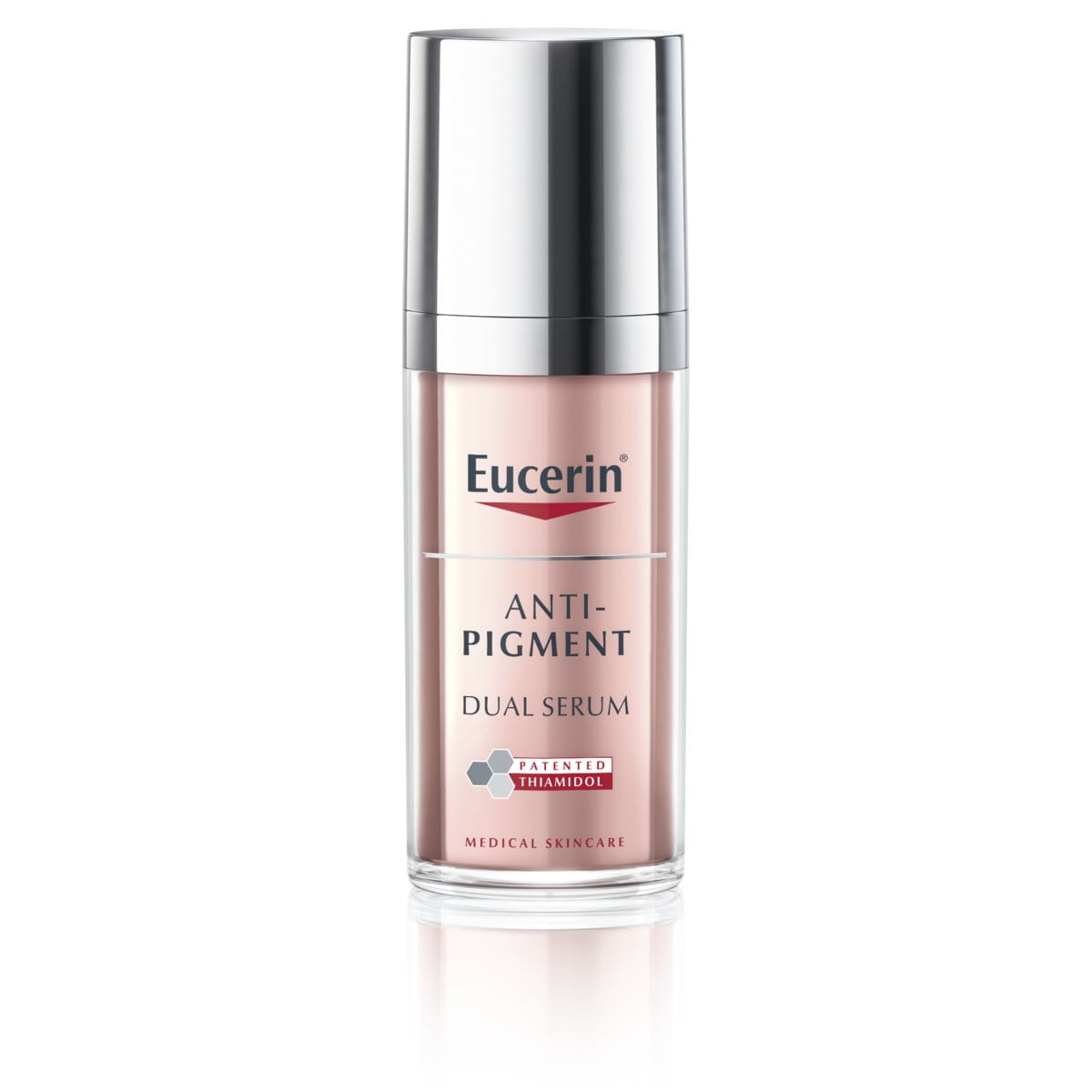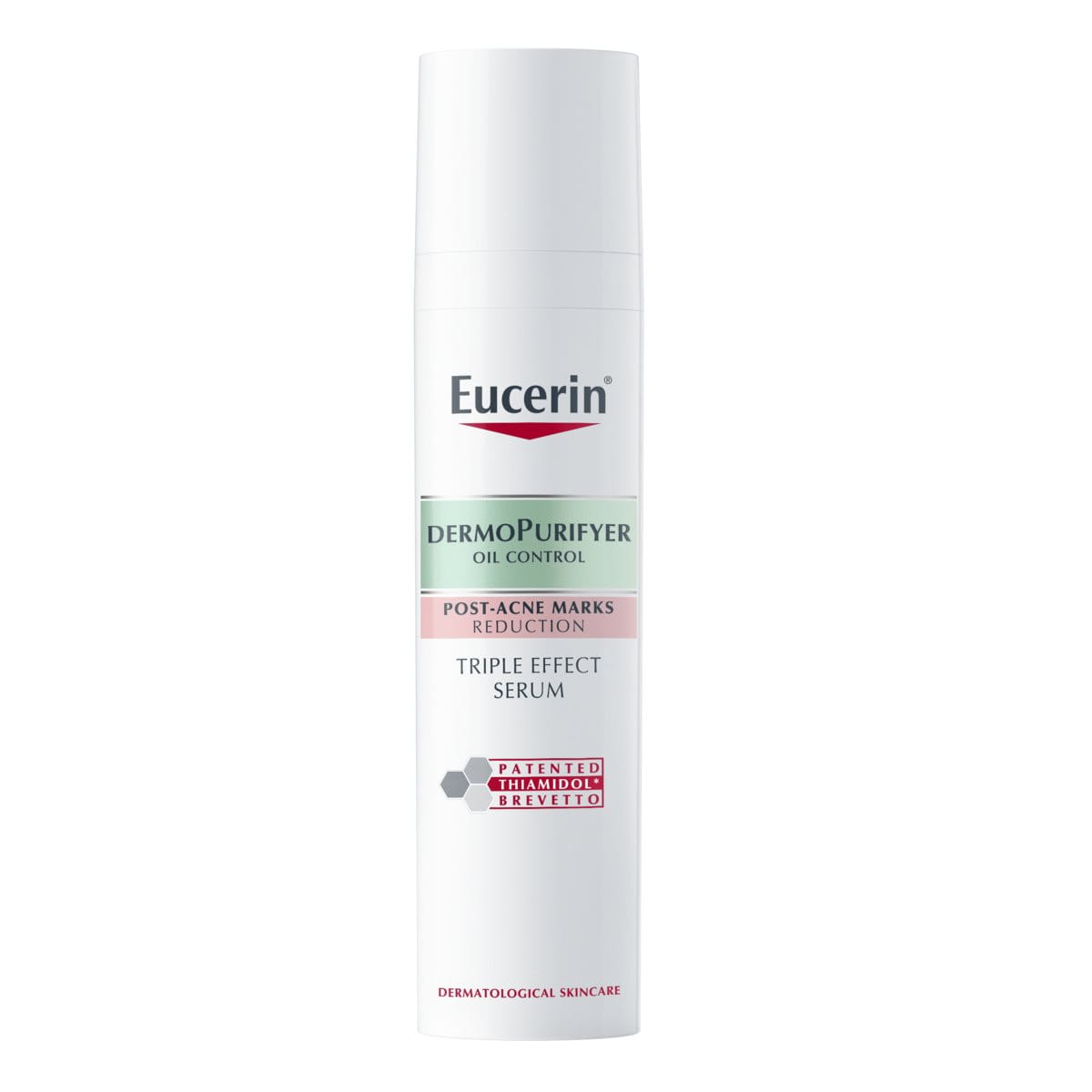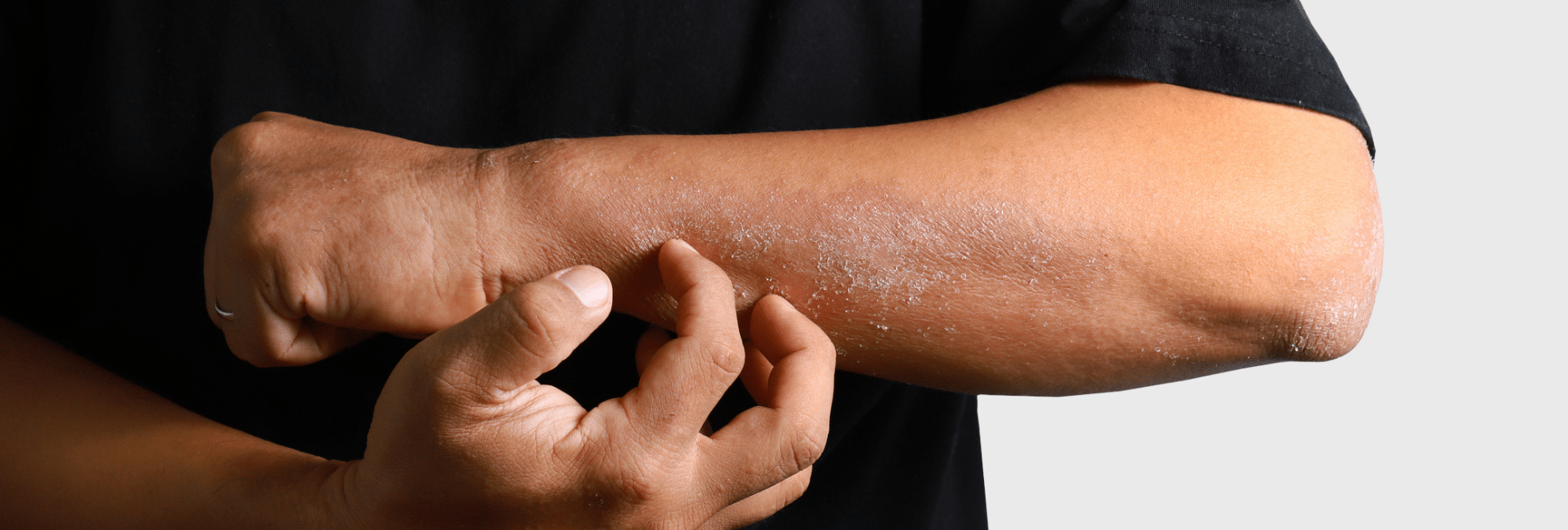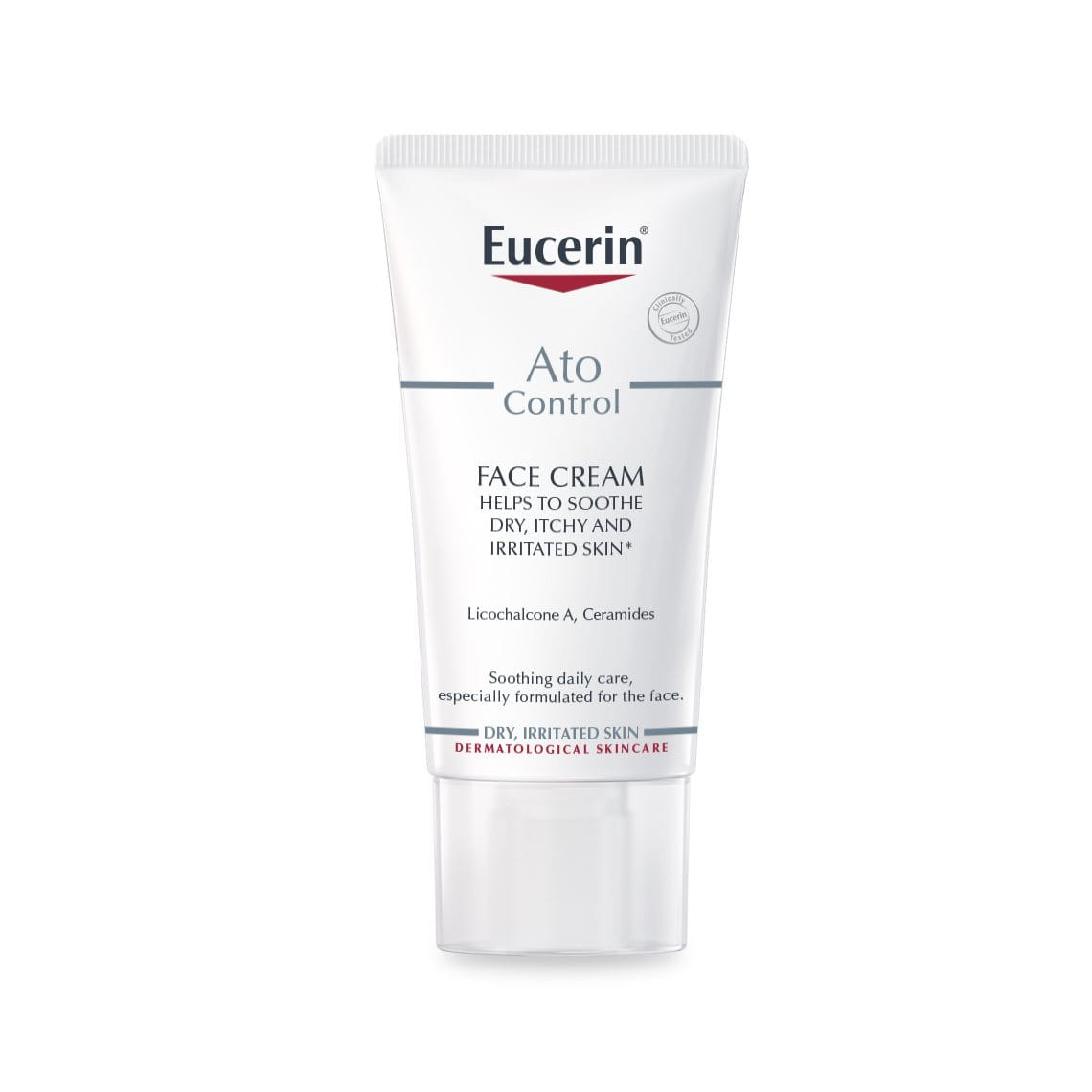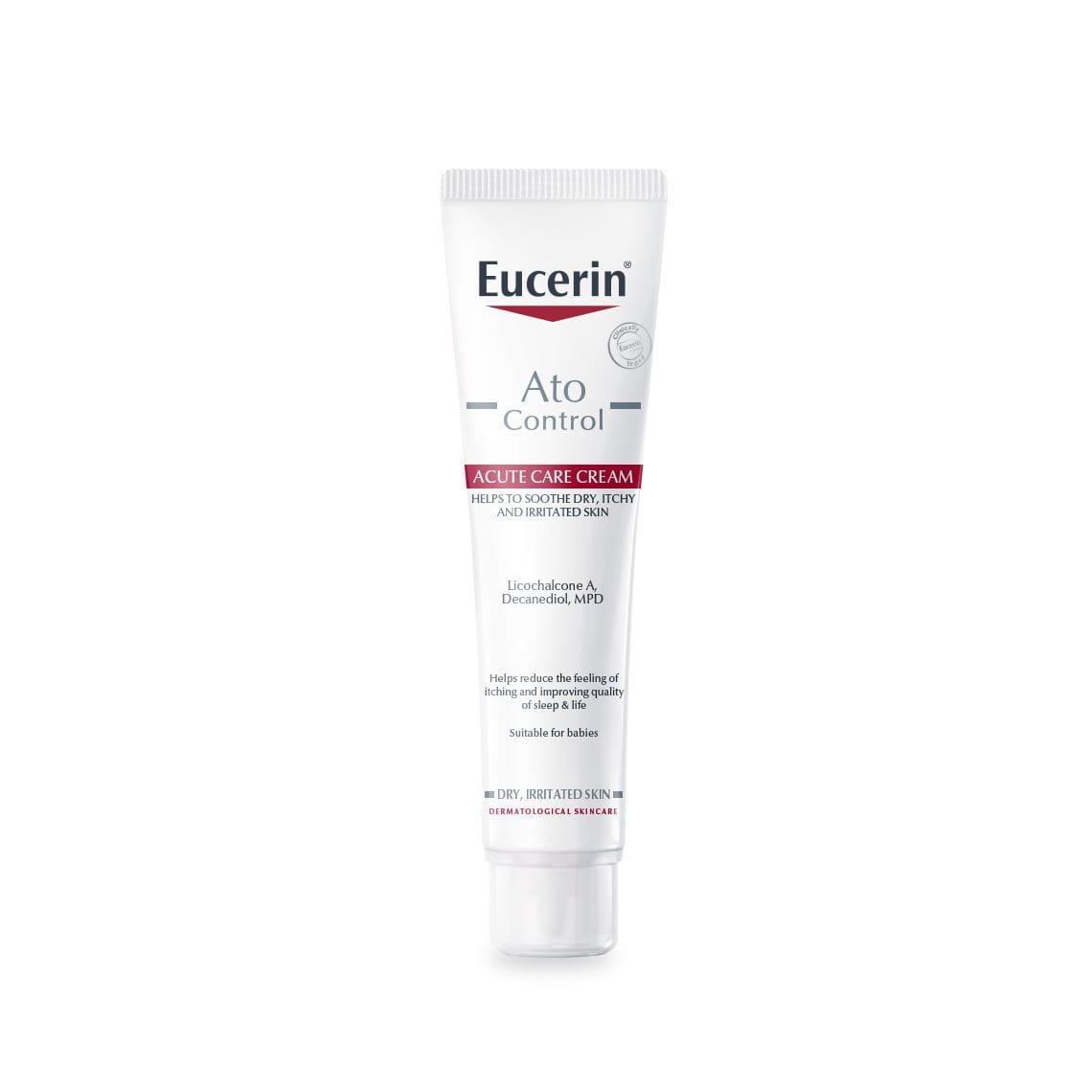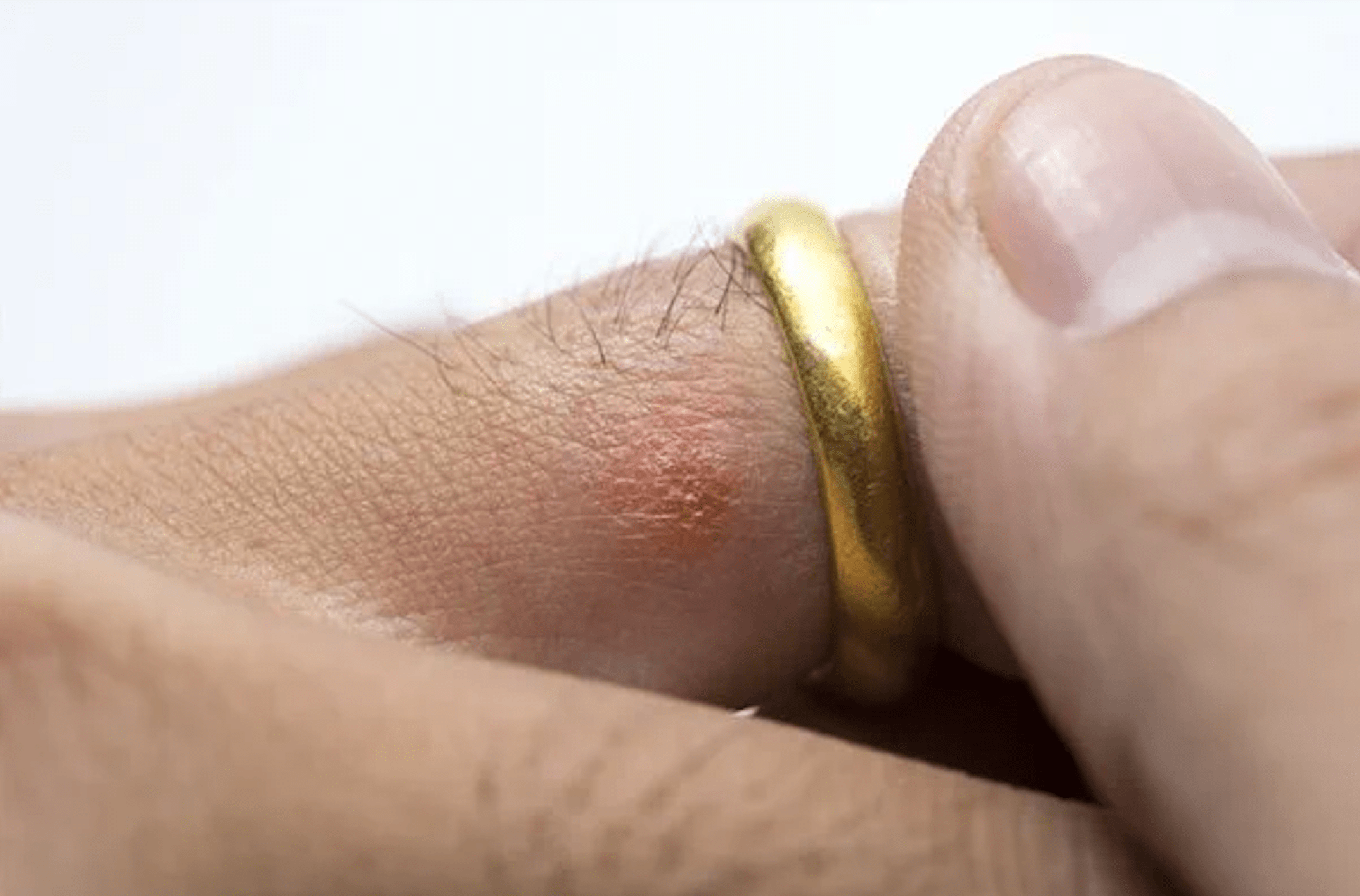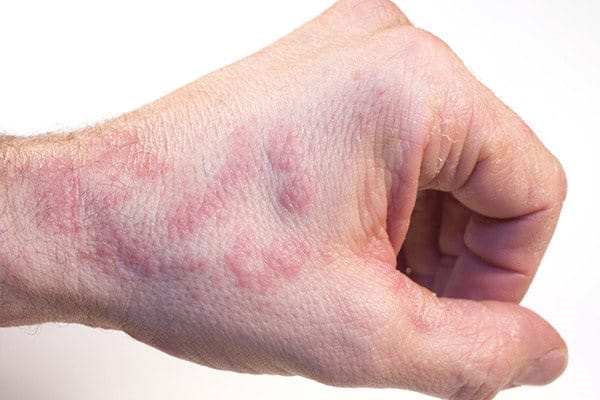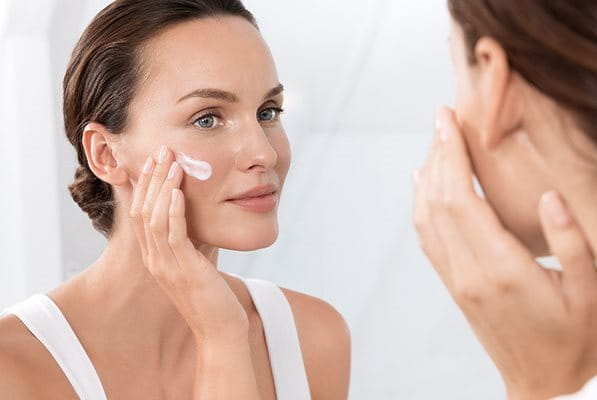What is contact dermatitis?
Contact dermatitis is a type of eczema that occurs when the skin becomes irritated or inflamed after contacting a specific substance that causes a reaction.
Generally, eczema is an inflammatory skin condition that makes the skin dry and causes itchiness, rashes, patches and blisters.
For contact dermatitis to clear up completely, it's important that you identify the substance or material that causes the flare up, so that you can avoid it in the future. Learn more about treatment for contact dermatitis in this article.
